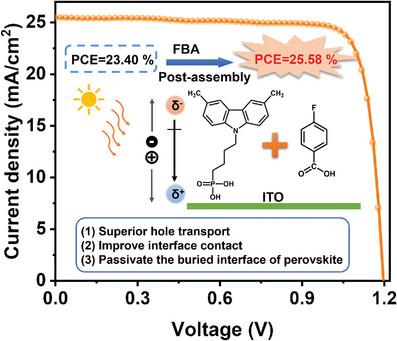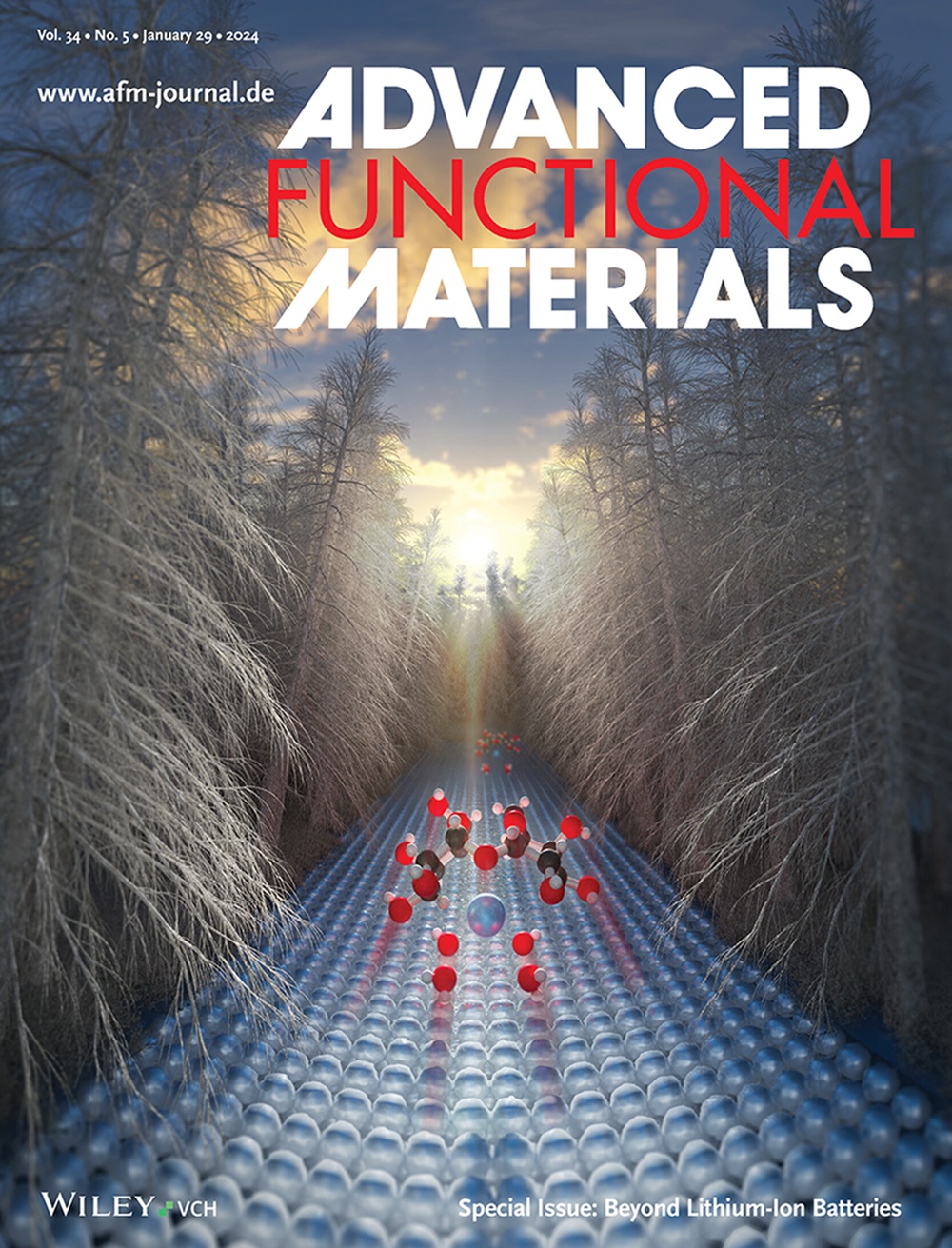Post-Assembled Dipole Benzoic Acids Modified Me-4PACz for Efficient and Stable Inverted Perovskite Solar Cells
IF 18.5
1区 材料科学
Q1 CHEMISTRY, MULTIDISCIPLINARY
引用次数: 0
Abstract
Self-assembled monolayers (SAMs), particularly those molecules composed of carbazole and phosphonic acid, are widely employed as effective hole-selective layer (HSL) in inverted perovskite solar cells (PSCs). However, the insufficient chemical bond formation with metal oxides (ITO) and self-aggregation in solvents of carbazole phosphonic acid SAM led to non-uniform HSL, which in turn affect power conversion efficiency (PCE) and stability of the PSCs. Herein, a series of benzoic acid materials (BAs), including p-fluorobenzoic acid (FBA) and p-methylbenzoic acid (MBA), are used as post-assembly molecules to effectively fill the voids between the [4-(3,6-dimethyl-9H-carbazole-9-yl)butyl]phosphonic acid (Me-4PACz) molecules to form a denser HSL, which facilitates passivation of the perovskite buried interface. In addition, post-assembled BAs with different dipole moments can effectively adjust the work function of Me-4PACz HSL, facilitating the transport and extraction of charge carriers. Consequently, the PSCs based on Me-4PACz/FBA HSL realize a champion PCE of 25.58%. Moreover, the unencapsulated devices maintain 82% and 94% of the PCE after 800 h of the outdoor storage (RH≈60%) and 2000 h in glove box, respectively. This post-assembly technique enhances both the PCE and stability of the device, blazing a simple and effective pathway for further development of PSCs.

求助全文
约1分钟内获得全文
求助全文
来源期刊

Advanced Functional Materials
工程技术-材料科学:综合
CiteScore
29.50
自引率
4.20%
发文量
2086
审稿时长
2.1 months
期刊介绍:
Firmly established as a top-tier materials science journal, Advanced Functional Materials reports breakthrough research in all aspects of materials science, including nanotechnology, chemistry, physics, and biology every week.
Advanced Functional Materials is known for its rapid and fair peer review, quality content, and high impact, making it the first choice of the international materials science community.
 求助内容:
求助内容: 应助结果提醒方式:
应助结果提醒方式:


